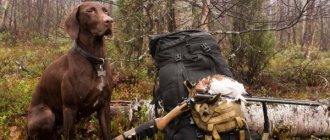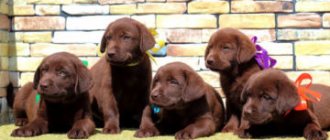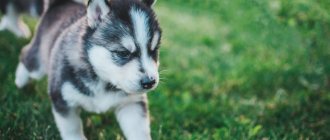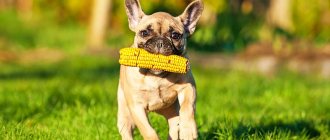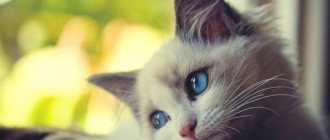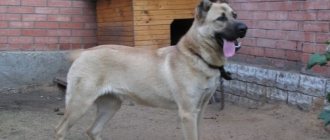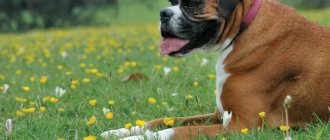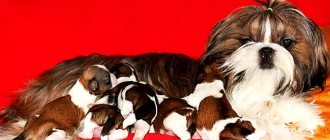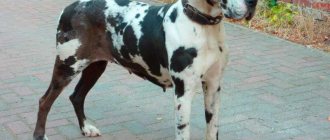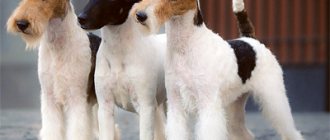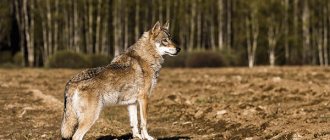The Wire-haired Drahthaar is a smart, courageous, hard-working German pointer, with which they hunt small and large game and waterfowl. The dog is selflessly devoted to its owner, treats family members loyally, is careful with strangers, but does not show aggression. Training Drahthaar dogs is not difficult - they are receptive to learning and remember lessons well.
Breed Features
Due to the breed's inclinations and character, the Drathaar dog lends itself well to special training and is excellent for hunting birds, hare, and wild boar.
Appearance
The short-haired German pointer is athletically built and has well-developed muscles. The head is medium in size, the muzzle is slightly elongated, the ears are medium in size. Straight back and moderately wide chest. The height of a male is 60-68 cm, that of a female is 57-64 cm. The weight of an adult dog is 27-37 kg.
A distinctive feature of this breed is its short, wire-like coat that lies tightly to the body. When in contact with water, it practically does not get wet and protects the four-legged hunter well from the cold.
The color is brown or black with graying and spots.
Character
Drathaar is a dog with a balanced, but quite stubborn and strong character. Cowardice and aggressiveness are considered vices; they appear rarely and are shortcomings of the dog.
This breed often exhibits leadership qualities and to avoid insubordination, proper training of the Drahthaar is necessary.
Hunting qualities
Hunting instincts are inherent in this breed at the genetic level. It is hardy and quickly adapts to any weather conditions.
The main task is to find a bird or animal and give the owner a signal. Thanks to its fine sense of smell, the Drathaar hunting dog is good at finding shot prey even in hard-to-reach places and bringing it to its owner. When hunting on water, this breed shows excellent results.
The drathaar is also suitable for hunting large animals; the dog picks up the scent well and fearlessly pursues prey. Having discovered game, it distracts its attention from the hunter with a loud bark, which allows him to make a successful shot.
How to overcome fears
Drathaar training will become impossible if the dog is afraid of its owner or external phenomena, such as a body of water, the noise of a shot, a loud shout, etc. It is good if the puppy shows fearlessness from birth and readily rushes into the water and adequately reacts to the sounds of gunfire and given commands. However, this does not always happen, and in order to teach an animal to fetch a duck that has fallen into a lake, you will have to teach the dog to overcome its fear of water.
So, long before you start training your dog to catch a bird, you should devote time to training, during which the dog will have to fetch objects from the water. It is advisable for the owner to walk through the shallow water, demonstrating the absence of danger, and sit on the shore, waiting for the animal to come closer. The dog's attempts to enter the water should be rewarded with treats, play and affection. Later, the owner can go deeper into the water and swim with the puppy until he feels confident.
Here, under no circumstances should you use force and coercion, as this is a direct path to the development of neurosis. In video recordings of hunting, one can often observe that a dog, frightened by the sound of a shot, gets lost and does not immediately begin to pursue the prey. Often because of this, the hunter loses a wounded animal or cannot find game that has fallen into the water. To avoid this, the puppy must get used to sharp sounds and learn not to react to them, continuing to follow the owner’s command.
Care
Dogs of this breed are sociable and easily adapt to both living in an apartment and being kept outside. Caring for a drathaar does not require much time. It is enough to comb your pet 1-2 times a week, clean the fur from dirt, regularly examine the eyes and clean the ears, get vaccinated in a timely manner and carry out prevention against parasites.
Nutrition
To remain functional, your pet needs a lot of energy.
- The puppy should be fed four to five times a day. The diet must include minced meat, cottage cheese and eggs.
- An adult pet is fed twice a day. Both dry food and natural food are suitable for feeding, but not from the table, but prepared specifically for the dog. During the hunting season, dog experts advise increasing the protein content in food.
The average life expectancy of dogs of this breed is 12-16 years. If you take proper care of your pet and monitor its health, it will delight you with a good mood and activity for many years.
Diseases include:
- melanoma;
- cataract;
- diabetes;
- otitis;
- hypothyroidism;
- volvulus;
- raw eczema;
- licked granuloma.
Features of maintenance and care
When choosing a drathaar, you should take into account that the passion for hunting is in its blood; it is an active and active animal, and not a sofa dog. If the dog is kept in an apartment, then you should devote a lot of time to walks, make sure that they are active, with sufficient physical activity.
Drathaars really do not like loneliness and often, out of boredom, damage furniture and make a mess. You should be careful when walking, especially with male dogs. Sometimes they react extremely negatively to other animals.
Raising a puppy
Drathaar puppies up to three months old do not yet fully demonstrate their advantages and disadvantages, so it is better to take an older dog so as not to end up with a defective one.
Raising a drathaar requires maximum patience; commands are given in a calm, even voice. Successful execution of a command must be encouraged; shouting and spanking are unacceptable.
In the first months, the puppy must respond to the name, and clearly follow the commands “place”, “come to me”, and “no”. After mastering these commands, you can begin preparing for the hunt.
It is imperative to accustom your puppy to water. Some people willingly jump into a pond the first time, but there are also those who are afraid of water. They will have to be taught slowly and consistently.
Don't raise a sissy!
Older hunters complain that too many owners raise their pets to be incorrigible sissies. If a puppy has not been in the fields and forests with its owner for up to five months, has not seen bird feathers and squirrel tracks, has not heard alarming and alluring sounds coming from the reeds, it will be extremely difficult to turn it into a brave pursuer of game.
One of the common mistakes owners make is an inadequate reaction to the fact that the dog brought a dead squirrel or a dead sparrow in his teeth. A person's disgust can play a fatal role in the development of a dog's character. It is typical for the Russian hound to grab game in its teeth and carry it to its owner. Hearing the owner scolding him for bringing a “dirty carcass”, the pet will lose interest in the game. To level out such an undesirable moment, the instructor will have to retrain the young animal for a long time.
To ensure that training a drathaar or other dog brings you the desired results, reward your pet with treats. After completing each command, the puppy should receive a reward from you. An animal must be punished for “pampering” without fanaticism. Resist the urge to hit your pet if he has done something wrong. To make the future hunter calm down and stop being naughty, put him on a chain.
Training and coaching
If you do not have experience in raising and training hunting dogs, then it is better to conduct your first lessons with a dog handler. Training and training of the drathaar should be carried out in a calm environment. The basic rule of successful training is that the pet should not be afraid of the owner, but trust him.
Training
Drahthaar training begins with learning the key command “fetch” or “fetch.” It must be practiced to the point of automaticity and carried out strictly, so that later the drathaar does not spoil the prey during the hunt.
It is better to start learning this command in a playful way, when the owner, holding the object, gives it to the pet. After the dog grabs it, you need to give the command “fetch” and get the pet to let go of the object. As soon as the animal learns that he is trying to achieve it, you can move on to training with throwing away the object.
It is very important that the hunting dog is not afraid of gunshots. For training, shots are fired at a certain distance from the animal (150-200 m). The owner must be near the pet at this time and evaluate its reaction to the shots. So that he doesn't get scared, you can keep him busy with games. To completely rid your pet of the fear of being shot, the distance to the shooter must be gradually reduced.
Nataska
After completely mastering the “fetch” command, you can move on to getting to know the prey. There is no need to rush here, because a premature encounter with game can frighten the dog or provoke aggression. The main thing is to teach your pet to remain completely still when he sees game until the hunter commands.
Training a drathaar is a painstaking task. It should start with one type of prey. As a rule, training dogs begins with a bird, and after the pet gains experience and proves itself on the hunt, you can start training a hare.
Coaching technique
Important! For hunting hare and game birds, different training methods are used. Experts advise training your dog in one direction. It will be possible to expand the range when the dog gains as much experience as possible.
It is best to start training of this kind when the dog is already 6-7 months old. At this age, the dog is already quite developed physically and emotionally connected with the owner. Before starting classes, your pet needs to be well fed and make sure that it is healthy (visual inspection).
It is easier to train a drathaar to hunt birds. Such prey will be within the capabilities of a young and inexperienced hunter. For training you will need:
- collar;
- favorite treats;
- leash no shorter than 3 meters;
- whistle.
Important! Before you start training, you need to put on a collar that repels parasites or treat its fur with a tick spray.
When learning to hunt a hare, the dog is first taught to practice the shuttle, take stances and track prey. After all this has been mastered, an adequate and calm reaction to the goal is achieved. It is important that the drathaar can withstand and not give chase until it hears the “fetch” command. The training ends with work in the fields, during which the emphasis is on maintaining a stance.
Important! You should not send your pet to dog handlers for training. It is better for the owner to handle the training personally, ensuring unquestioning execution of all orders and commands.
The Wire-haired Drahthaar is a smart, courageous, hard-working German pointer, with which they hunt small and large game and waterfowl. The dog is selflessly devoted to its owner, treats family members loyally, is careful with strangers, but does not show aggression. Training Drahthaar dogs is not difficult - they are receptive to learning and remember lessons well.
Hunting with a drathaar
Thanks to its innate instinct, hunting with a drathaar can be carried out in any conditions for all types of game.
On waterfowl
Waterfowl hunting varies slightly depending on the time of year.
In the autumn-winter period, it is advisable to feed your pet before hunting (which is not recommended at other times). During the hunt, the dog should not be on the water; it is sent into cold water to collect prey only after the end of the hunt. After collecting prey, the dog cannot be put on a leash; it must be free to run around and warm up.
Do not let your dog into the water when there is ice near the shore; it is thin at the edges, breaks under the dog, and it can be very difficult for him to get out. Upon returning home or to transport, the animal should be dried and allowed to dry in a warm place.
Of course, it is safer to hunt with a drathaar in the warm season. This breed is capable of walking almost any trail and getting prey even from heavily overgrown bodies of water.
For experienced hunters, I advise you to take some pebbles with you on your first hunt so that you can throw them towards the downed bird in the event that the dog loses direction. It is better when the dog does not lie down when the shot is fired, but watches the falling bird. This will make it easier for her to find game later.
Extracting a wounded animal from the water is quite a difficult task even for an experienced dog. Long swimming and diving after a slightly wounded duck can exhaust all your pet's strength. If the wounded bird is not caught within 15 minutes, it is better to return for it later, because a wounded bird, getting ashore, will definitely leave a mark.
For the hare
Hunting a hare with a drathaar is almost always productive. The genetic ability to explore large areas makes this breed almost ideal for this type of hunting. Thanks to its excellent sense of smell, the drathaar easily finds a hare even while lying down.
Having found a hare, the dog gives a voice. She also notifies the owner with her voice if the hare stops. With such information about the movement of the game, the hunter can easily prepare for the shot.
For pheasant
Pheasant hunting with a drathaar goes like this: the pet, sensing a bird, makes a stand and waits for a command. The hunter gets within shooting range and gives the command to raise the pheasant.
Drathaar drives the bird out of the tall grass and bushes right under the gunfire. Bird hunting dogs must have good self-control so that in the excitement they do not frighten away the prey ahead of time.
Boar hunting
Hunting for wild boar with a drathaar is measured due to the dog’s calm search for prey. When a beast is detected, the drathaar waits in a stance for a command. It should be borne in mind that the main task of the drathaar is to restrain the boar by barking.
Unfortunately, some dogs are unable to cope with excitement and aggression and rush at the wild boar. This is unacceptable, because the pet can receive serious wounds and even die in a fight with an angry beast.
Basic Commands
Training a Drahthaar puppy at home is necessary until the animal is socialized. During the first year, the owner must teach his pet the basic commands. It is much more difficult to train a two-year-old animal from scratch.
An important skill is the “Fetch” command. Drathaar will happily run after a thrown object, but it is difficult to force them to open their jaws. A dog that is not trained in this skill will begin to spoil the game.
The object is held in front of the pet's muzzle, allowing it to be sniffed. The dog will grab the object with its mouth, the owner at this moment says: “Fetch!”
If the animal continues to hold the object in its mouth without letting go of the leash, the person runs with it for several meters, holding the dog next to it. After this, the command is repeated and the item is taken away. Over and over again, the animal will begin to understand that the item needs to be brought and given to the owner. Training a drathaar puppy and teaching the “Come to me” command occurs when the owner calls the pet. In order to train your dog to come, just repeat this phrase for a week. Gradually the dog will get used to it and will respond to the command.
Teaching the commands “Down!” and “Sit!” also necessary for everyday life. They are trained through coercion, rewarded with praise and treats when performed correctly. For training, find a quiet place where the puppy will not be distracted.
The owner says “Sit!” and sits down next to the dog, gradually pressing on the withers. The animal sits down and is given a treat. When teaching the command “Lie down!” The treat is held in front of the animal so that it reaches for it and assumes a lying position. They begin training at the age of six months.
The “No” command becomes one of the main ones taught at an early age. When training, you should not hit the animal or shout at it. The owner says “No!” when the pet does something forbidden. If you shout at a dog, it will start to get scared and stop trusting its owner. Gradually, training is made more difficult by placing prohibited objects in the animal’s path. When the command is executed correctly, the puppy stops responding to them. After this, the command for contact with other animals and strangers begins to be practiced.
Order "Place!" inherently implies a demand to leave. Often when this is done, the dog gets offended and goes to his bed. He believes that the owner is driving him away and stops pestering the person. If there is a misunderstanding, the exclamation is usually repeated.
When training, alternating commands “Lie down”, “Come to me”, “Place” are used. Over time, the puppy will begin to navigate space and begin to understand what the owner requires of him.

